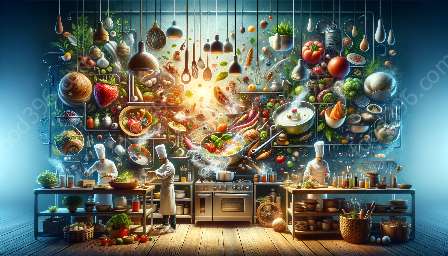Food texture analysis is a crucial aspect of culinary science and food chemistry, as it plays a significant role in the sensory perception and overall culinary experience. This comprehensive exploration delves into the intricate world of food texture, its analysis, and its impact on culinary arts.
The Significance of Food Texture
Food texture encompasses the physical properties of food that are perceived by the sense of touch, including attributes such as hardness, chewiness, crispness, and smoothness. Texture significantly influences how we perceive and enjoy food, playing a pivotal role in our sensory experience. Understanding and analyzing food texture is essential for creating appealing culinary delights.
Analysis Methods
Texture analysis involves the quantification and measurement of a food's physical properties, which can be achieved through various methods such as compression, extrusion, cutting, and shearing. These methods provide valuable insights into the mechanical properties of food, allowing for accurate assessment and comparison of different textures.
Relationship with Culinary Science and Food Chemistry
The study of food texture is closely intertwined with culinary science and food chemistry. Culinary science focuses on understanding the principles of food preparation and transformation, while food chemistry delves into the composition and interactions of food components.
Texture analysis serves as a bridge between these disciplines, providing a scientific foundation for understanding the physical characteristics of food and their correlation with sensory perception. By examining texture at a molecular and structural level, culinary scientists and food chemists can unravel the complexities of food behavior and optimize the sensory qualities of culinary creations.
Impact on Culinary Arts
The texture of food is a defining factor in the culinary arts, shaping the overall dining experience and influencing consumer preferences. Different textures can evoke specific sensations and enhance the enjoyment of food, making texture analysis an invaluable tool for chefs and food professionals.
Chefs utilize texture analysis to craft harmonious compositions of contrasting textures, creating a symphony of sensations on the palate. By manipulating textures, chefs can elevate the visual appeal, flavor perception, and mouthfeel of their creations, ultimately elevating the culinary experience.
Future Developments and Innovations
Advancements in technology and research continue to propel the field of food texture analysis forward, opening doors for new innovations in culinary science and food chemistry. From the development of advanced texture measurement devices to the exploration of novel textural experiences, the future holds exciting prospects for enhancing our understanding and application of food texture.
Conclusion
Food texture analysis stands as a cornerstone in the realm of culinary science and food chemistry, offering profound insights into the intricate relationship between texture, sensory perception, and culinary arts. Embracing the complexities of food texture not only enriches the gastronomic experience but also fuels innovation and creativity in the ever-evolving landscape of culinary arts.


